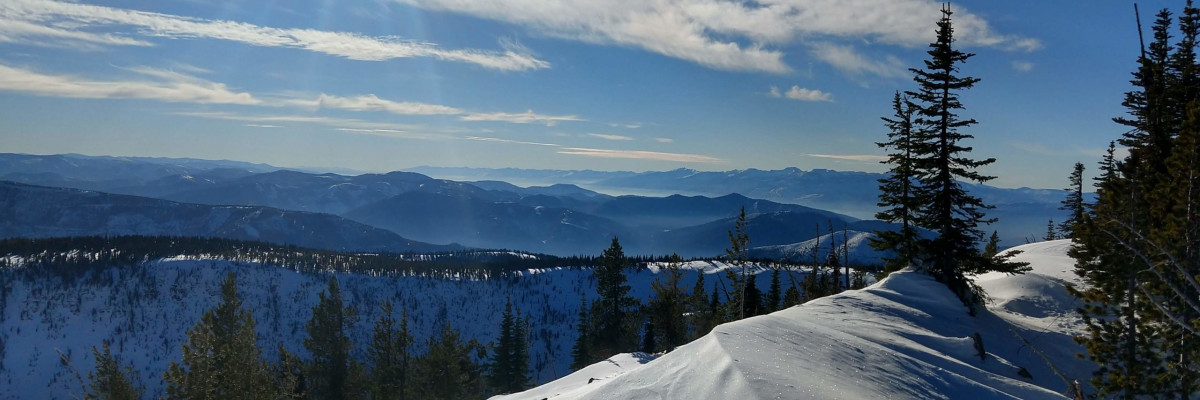The avalanche danger in the west central Montana backcountry is moderate in upper elevation terrain and LOW elsewhere.
Good morning, this is Jeff Carty with the West Central Montana Avalanche Center’s avalanche advisory for December 5, 2020. This advisory does not apply to operating ski areas, expires at midnight tonight, and is the sole responsibility of the U.S. Forest Service.
The high pressure is still with us, and it looks like it will be holding on till Wednesday. The inversion has intensified and higher peaks did not freeze last night with temps ranging from 31 º to 38º above 7000′ while the valley bottom was 15º. Winds have been calm with brief gusts. Temperatures up to 50º are forecast for the highest peaks today.
The extended above freezing temperatures and strong solar warming be loosening bonds within the snowpack today. Loose wet avalanches are likely and wet slab avalanches are possible.
Yesterday, the extent of the surface hoar was not nearly as extensive as we expected. With above freezing temperatures, it did not grow at high elevations last night. As the night time temps dip back below freezing expect surface hoar development but mostly isolated to northern aspects and lower elevations. While it is not a stability issue currently, surface hoar is a persistent weak layer that can cause stability issues for a long time once it is buried.
We found near-surface facets in the upper 4″ yesterday in the Rattlesnake, but the lower snowpack was well bonded without failures in stability tests at 7500′ on a northeast aspect. The areas of shallow snowpack such as windswept slopes and below 7000′ are of more concern. These areas are developing facets more extensively and may be a stability issue with further snow load.
In the Rattlesnake yesterday wind slab from Monday was well bonded. However, there may still be pockets of reactive wind slabs in steep wind-loaded start zones.
The bottom line:
Elevated overnight temperatures and solar radiation will be creating wet snow problems. Wet loose avalanches are likely and wet slab is possible. Southern aspects will be most affected. Wind slabs may still be present, practice caution in wind-loaded start zones greater than 35º. Practice safe travel protocols. Travel one at a time in avalanche terrain, carry a beacon, shovel, and probe, and stay alert for signs of instability. Dig a pit. Look for red flags.
The avalanche center forecasts for a 1420 square mile area stretching from Lost Trail to Seeley Lake, we can’t see it all weekly. Your snowpack and conditions observations help fill in the gaps and produce a more accurate forecast, please submit them here.
Ski and ride safe
























